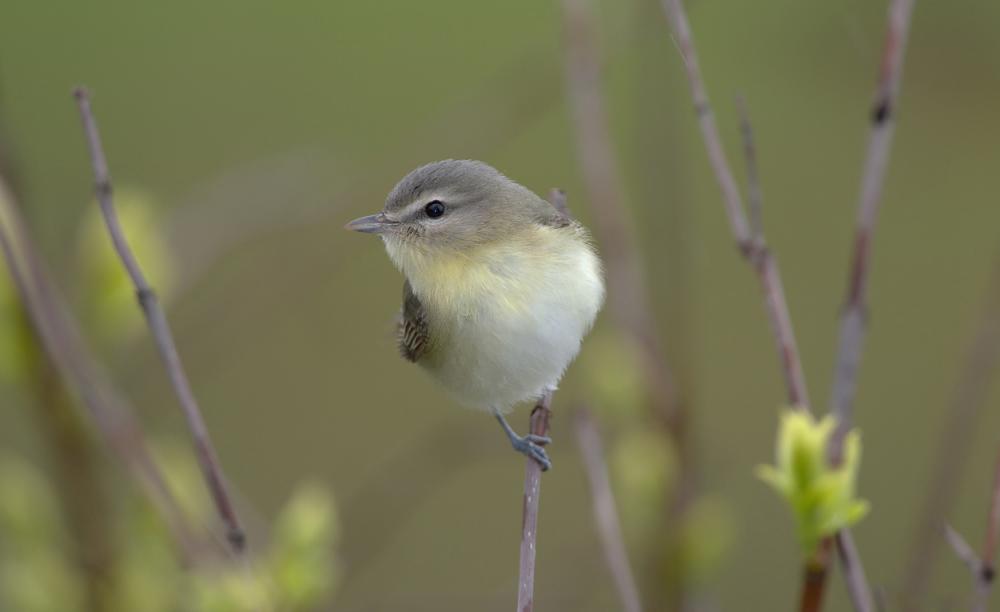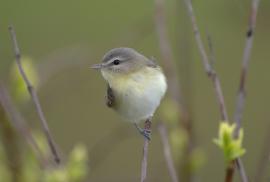Guide to Boreal Birds
Overview
Because this vireo was first described by John Cassin in 1842 from a specimen collected near Philadelphia, both its common and Latin names refer to Philadelphia, but it is by no means confined to that area. The species winters in southern Mexico and Central America south to Panama. An unassuming bird, the Philadelphia Vireo is much sought-after by birders but can be difficult to find since its song is very much like the more abundant and widespread Red-eyed Vireo. It is easily overlooked in spring since it does not sing much on migration. In addition, arriving chiefly during the last week in May, it is present when the foliage is already dense. Philadelphia Vireo tends to be one of the later returning migrants in the spring, following a relatively narrow route up from Central America and across the Gulf of Mexico so that it is rare in Florida and west of the Mississippi Valley states.
Description
6" (15 cm). Sparrow-sized. Olive above, yellowish below, with pale eyebrow, dark line through eye to base of bill, and no wing bars.
Voice
Like the Red-eyed Vireo but higher and slower, See-me? Here-I-am! Up-here. See-me?
Nesting
4 brown-spotted white eggs in a cup of bark strips, grasses, and mosses lined with bits of lichen and thistledown.
Habitat
Open second-growth woodlands (often aspens), old clearings and burned-over areas, and thickets along streams and lakes.
Range/Migration
Breeds in southern Canada and northernmost United States. Winters in tropics.



